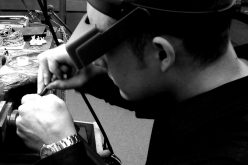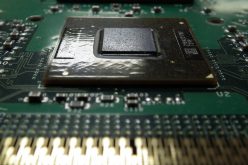
Courtesy Photo
Incarceration in Cook County Jail, Illinois, costs $1.4 million a day to warehouse 10,000 inmates, according to figures cited in the Vision and Action Plan. Meanwhile, there’s no money for schools or social services.
“For over forty years our criminal justice system has over-relied on punishment, policing, incarceration and detention. This has ushered in an age of mass incarceration. This era is marked by sentencing policies that lead to racially disproportionate incarceration rates and a variety of ‘collateral consequences’ that have harmed our communities and schools… .”
In this time when our self-inflicted troubles seem so obvious but the possibility of change — that is to say, political transformation, through awareness, compassion and common sense — feels more illusory than ever, something extraordinary, that is to say real, is on the brink of happening in Chicago.
The above quote isn’t just another analysis from the margins, to be uttered and instantly ignored. It’s part of a Vision and Action Plan, written by Cook County Juvenile Court Judge Colleen Sheehan, not simply proposing fundamental change in our punishment-based system of justice but describing change that is about to happen and, in fact, is already underway.
I’ve written a lot over the years about a concept called Restorative Justice, a healing-based, multifaceted approach to dealing with crime — social harm — that seeks first of all to repair the damage that has occurred and, profoundly, to restore the wholeness within a community that has been shattered. RJ, as it is known, seeks to create and expand trust between people, not just pass judgment on wrongdoers and shrug as neighborhoods go to hell.
Sheehan, as a Juvenile Court judge, saw firsthand the ineffectiveness of the current system — the “collateral consequences” of America’s prison-industrial complex and the utter vulnerability of the children caught up in the system.
“The United States has the highest incarceration rate in the world.”
And where has this gotten us? Low-income neighborhoods in America’s major cities are being torn apart not just by crime but by “justice” — by the fact that so many of their kids not only go to jail via the school-to-prison pipeline but wind up caught in a system that never lets them go. When they get a record, they are often consigned to second-class citizenship for the rest of their lives.
And the cost of their incarceration is astronomical — some $1.4 million a day to warehouse 10,000 inmates in Cook County Jail, according to figures cited in the Vision and Action Plan. And meanwhile, there’s no money for schools or social services.
Sheehan decided she couldn’t just shrug helplessly at this situation. In collaboration with numerous RJ practitioners in the Chicago area, she began envisioning an alternative: a Restorative Justice Community Court. The idea was presented to Chief Cook County Circuit Judge Timothy Evans, who saw its value — and with the help of a grant from the U.S. Department of Justice, a two-year pilot program for a new system of justice will begin in 2017 in Chicago’s North Lawndale community, a community already committed to serious social change.
There’s still an enormous amount of planning to be done. As Sheehan told me, “The concept is very simple: repair harm from crime. But how you do it is very complex.”
Here are the basic logistics, according to the Cook County Circuit Court: “The Community Court will hear nonviolent felonies and misdemeanors committed by adults ages 18 through 26 who reside in Chicago’s North Lawndale neighborhood… . Defendants will enter the program voluntarily, and those who successfully complete the program may have the opportunity to have their charges dropped and arrest expunged.”
Enter the program voluntarily? What kind of court system is that? Perhaps you can see the complexity emerge. Restorative Justice is a system based on trust, honesty and connectedness. It can’t simply be imposed from above. Even the alleged offender’s presence must be uncoerced because that’s the only way RJ will work.
At the center of the RJ process is the peace circle. Everyone in the circle sits in what I call vibrant equality, a part of the whole. A talking piece is passed around. You only speak when you hold the talking piece; everyone gets a chance to speak; most of the time you listen; you wait your turn. When the purpose of the circle is to repair harm, all those affected — including the victims of the crime, but also members of the community affected by the crime — have a right to be included, and to speak their minds. Participants strive to reach an agreement about how to repair the damage that has been done.
“As a result,” as the Vision and Action Plan states, “peace circles and restorative conferencing can help address the underlying causes of violence. Throughout the process, victims and offenders will be supported by RJ Court staff. Community service is one example of an activity the offender can participate in to better understand the impact of the offense, give back to the community, and repair the harm she, he, or they created.
“Now is time for innovation in our approach to punishment and the moment is right for a philosophical shift in the way we think about what is truly just in the justice system.”
The current system acknowledges only the state’s interest when a crime occurs, and that “interest” is a sheer, bureaucratic abstraction, a predetermined doling out of tit for tat. However, a community’s interest is real and vital. In an impoverished neighborhood like North Lawndale, that interest is survival itself. The point of the Restorative Justice Community Court is to re-empower the community, to help it address the causes of its crime and rebuild itself.
As Cliff Nellis, executive director of the Lawndale Christian Legal Center and one of the new court’s co-planners, told me, “This court needs a community, a home.” Only in a state of collaboration with the community can the court hope to achieve its goal of healing and repair.
“There’s a huge divide between the community and the justice system,” Nellis said, noting how badly that relationship has been damaged over the years. “This is an opportunity for the system to make up for previous errors, to become worthy of the community’s respect and trust.”
Robert Koehler, syndicated by PeaceVoice, is an award-winning Chicago journalist and editor.










